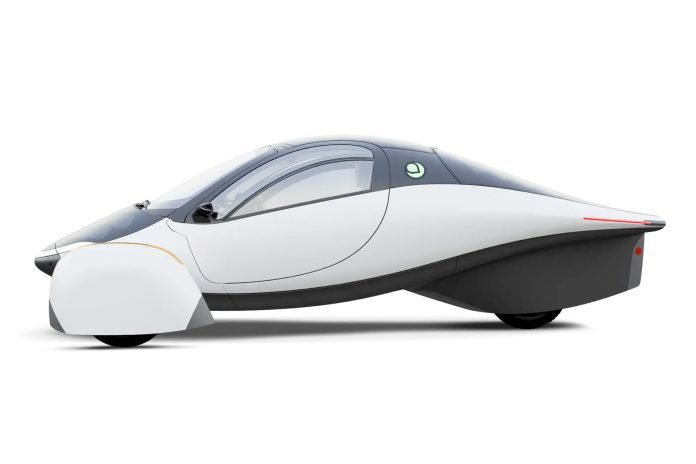Aptera Motors, a San Diego-based electric vehicle company, has taken a significant step towards sustainable mobility with its solar-powered electric vehicle, the Aptera PI2. This innovative vehicle doesn’t require plugging into an electric outlet for daily driving, as it charges directly from the sun, showcasing a fresh approach to automotive sustainability. As the first “Production Intent” vehicle from Aptera, the PI2 aims to redefine efficiency in electric vehicle (EV) design, providing range, speed, and energy conservation in an affordable, futuristic package.
The Aptera PI2: Harnessing solar power for daily driving
The Aptera PI2 operates primarily as a solar-powered electric vehicle (sEV), designed to capture solar energy to charge its battery and keep it moving for miles each day. This unique approach distinguishes it from traditional EVs and hybrid vehicles, which rely on either plug-in charging or fuel. Equipped with approximately 700 watts of solar cells on its body, the Aptera PI2 can generate an additional 40 miles of range per day without external charging, a capability not seen in most EVs on the market.
For drivers who exceed the daily 40-mile solar range or in cases where the sun isn’t shining, the Aptera can also be plugged in to recharge. Battery pack options include larger capacities capable of delivering up to 1,000 miles (1,600 km) of range, setting the Aptera PI2 apart as a true long-range vehicle. In January of the previous year, Aptera introduced the Launch Edition, featuring a 400-mile range on a single charge with a 42 kWh lithium-ion battery pack, further enhanced by continuous charging from the integrated solar panels.
To illustrate this capability, the Tesla Model S Long Range with a 100 kWh battery pack achieves approximately 405 miles per charge, meaning Aptera’s lightweight, solar-driven design yields comparable range on less battery capacity. This emphasis on efficiency and light energy consumption allows Aptera’s sEV to lead in the renewable-powered automotive market.
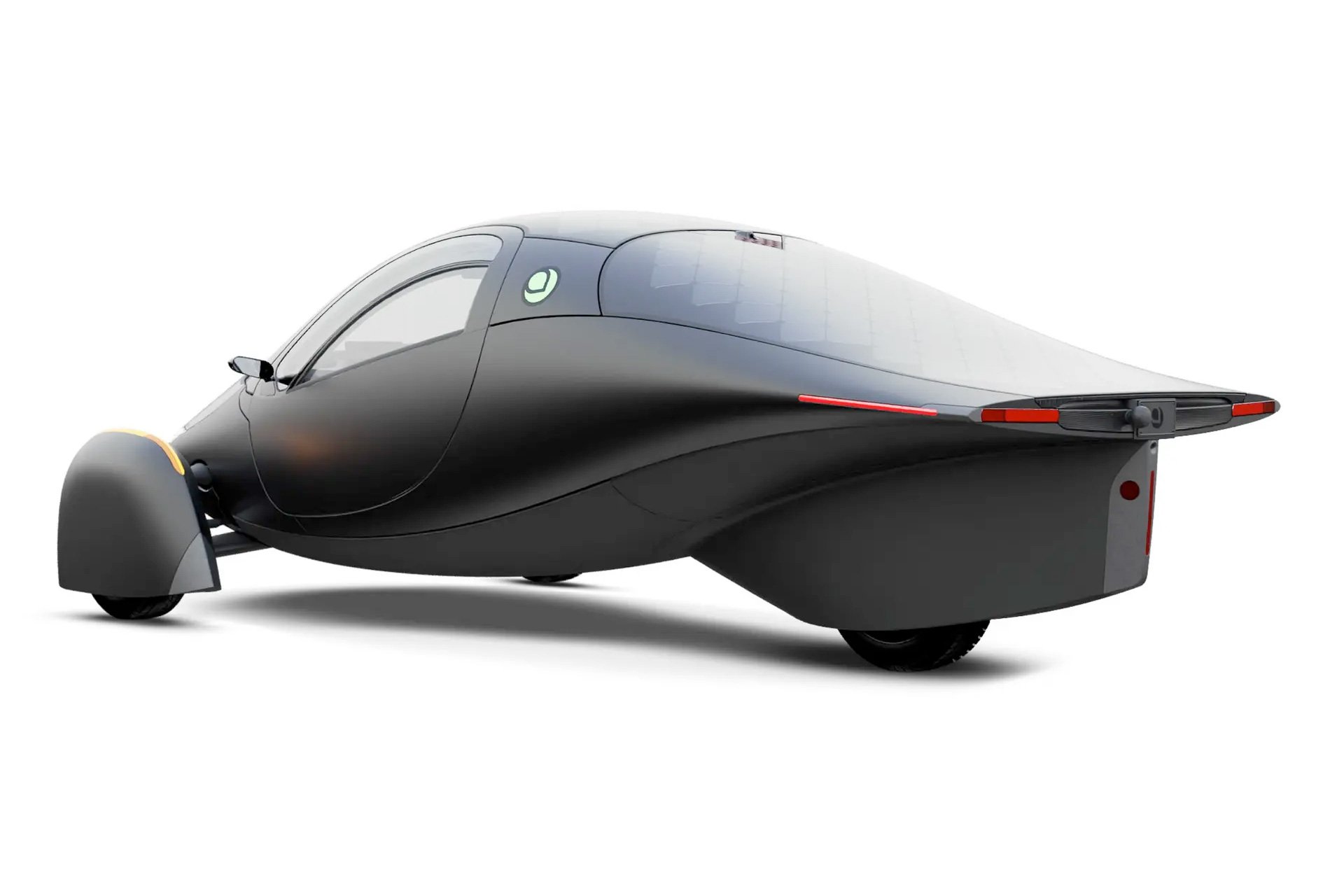
Comparing Aptera’s solar capability to other EV models
Solar-powered car options have been limited in recent years, typically contributing minimal extra range. Toyota’s Prius, for instance, incorporated solar panels in previous models to power internal systems like cabin fans, yet added only about one mile of range per day. Similarly, the 2020 Hyundai Sonata Hybrid offered an optional solar roof, which generated approximately 200 watts of power, allowing for about two miles of range per day and primarily charging the car’s 12-volt system.
Aptera, however, is engineered with solar efficiency as a priority, significantly outpacing these earlier examples. The PI2’s solar panels contribute meaningfully to the car’s battery, making it a viable daily commuter vehicle that can, under optimal conditions, avoid plug-in charging entirely.
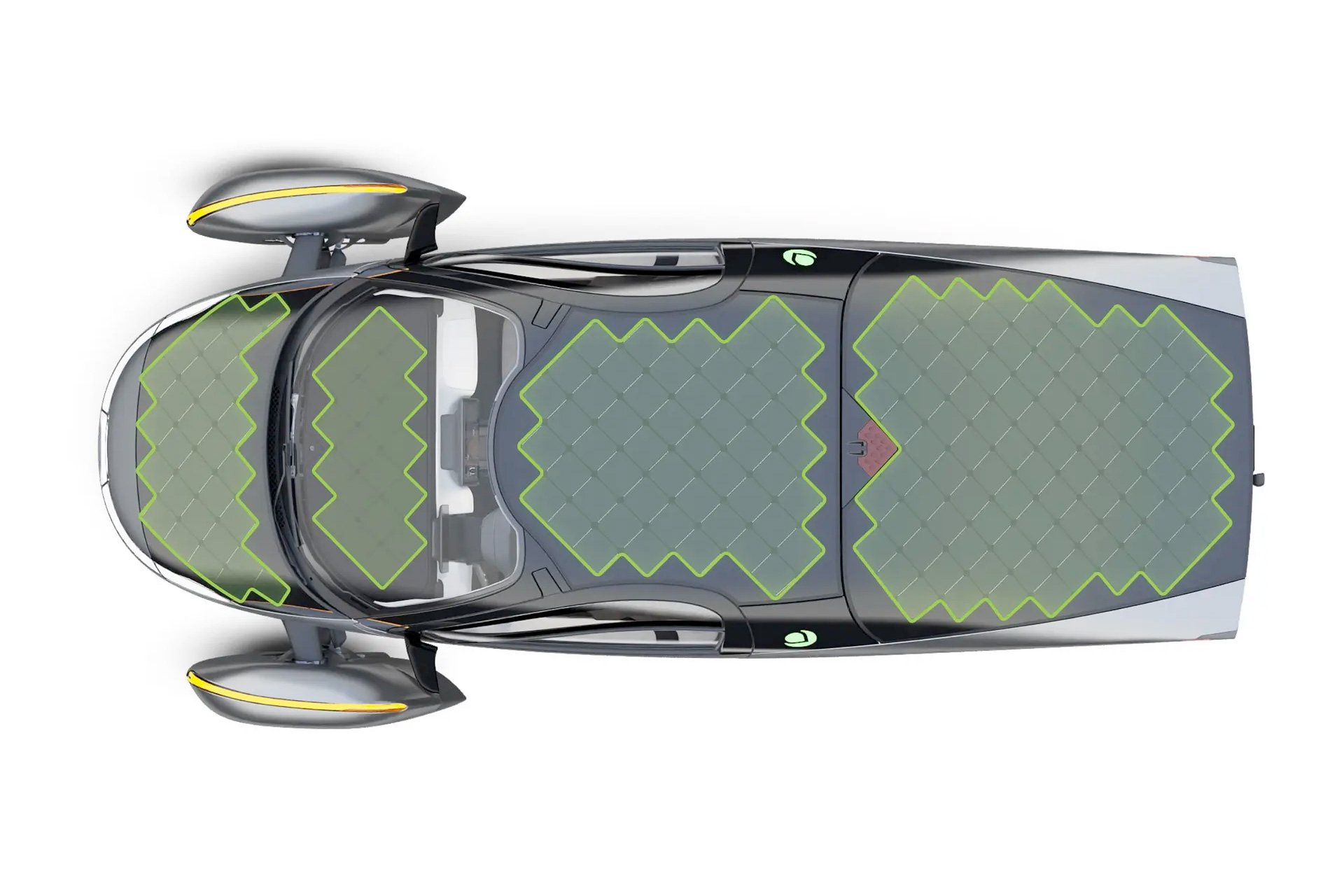
Performance: Speed and power in a solar-efficient package
Despite its focus on renewable energy, the Aptera PI2 doesn’t sacrifice performance. The vehicle’s electric drive train, powered by a 201-horsepower (150 kW) EMR3 drive unit, enables acceleration from 0 to 60 mph (96 km/h) in just four seconds, with a top speed of 101 mph (162 km/h). To put this into perspective, this level of acceleration is comparable to that of performance vehicles like the Chevrolet Corvette C6 or Audi RS3. When not accelerating rapidly, the PI2’s motor operates at a continuous power rating of 67 horsepower (50 kW), balancing power efficiency with performance.
This mix of speed and efficiency is further enhanced by Aptera’s emphasis on lightweight materials. The 25 kWh battery version weighs only 1,800 pounds (816 kg), similar to the compact Smart car. Even the larger 100 kWh battery pack, capable of providing up to 1,000 miles of range, brings the vehicle’s total weight to just 2,200 pounds (998 kg), aligning it with the weight of a first-generation Mazda Miata.
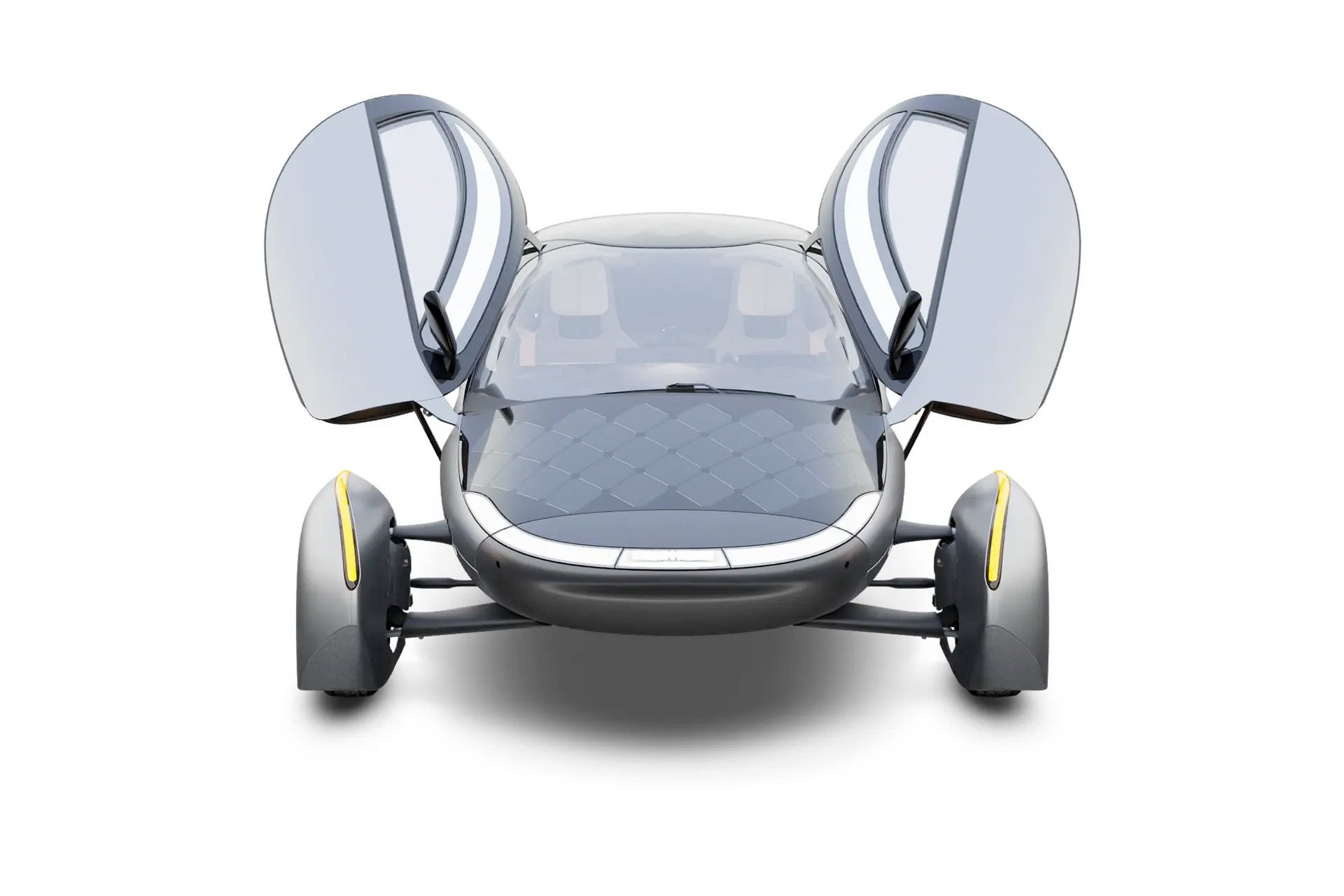
Aerodynamics and design: Breaking records in drag coefficiency
Aerodynamics play a crucial role in Aptera’s design, contributing to its ability to maximize energy efficiency. The PI2 has a three-wheeled, six-piece carbon fiber composite body crafted in Modena, Italy. This streamlined structure has earned it a drag coefficient of 0.13, a measurement that places it among the most aerodynamically efficient vehicles ever produced. For reference, typical cars have drag coefficients ranging between 0.25 and 0.35, while highly streamlined vehicles like the Tesla Model 3 achieve around 0.23.
A low drag coefficient means less air resistance, which helps the Aptera consume less energy while driving. For comparison, the EXE181, a prototype vehicle designed to be exceptionally aerodynamic, has a drag coefficient of 0.181. The ThrustSSC jet car, which holds the land-speed record, has a coefficient of 0.16. Such low drag rates in the Aptera allow it to travel farther on less energy, a feat that underscores its focus on sustainability without compromising driving performance.

Weight optimization and sustainable construction
To maintain its lightweight profile, Aptera has applied several innovations to minimize component weight. By collocating control boards and reducing the size of wire connectors, Aptera reduces the amount of material needed for wiring and harnesses. Additionally, Aptera has dispensed with traditional controller board covers in favor of a dust- and waterproof coating, further reducing weight while ensuring durability. These small changes contribute to the vehicle’s efficiency and allow it to maximize energy usage derived from solar power.
The Aptera’s journey and future production goals
Aptera’s journey to the present-day PI2 wasn’t straightforward. The company’s story began in 2008, when it developed the Typ-1h prototype, an electric hybrid capable of achieving 300 miles per gallon. Aptera also produced an all-electric model, the Typ-1e, with a 120-mile range. The design and concept of these models were ahead of their time, so much so that one of the prototypes even appeared in the 2009 Star Trek reboot.
Despite its early successes, Aptera Motors ran out of funding in 2011 and ceased operations. Eight years later, in 2019, original founders Steve Fambro and Chris Anthony relaunched the company with a new vision and began development of the solar-powered three-wheeled vehicle that has since evolved into the PI2. Unlike traditional cars, the Aptera PI2 is legally classified as a motorcycle, making it unique in both design and regulatory compliance.
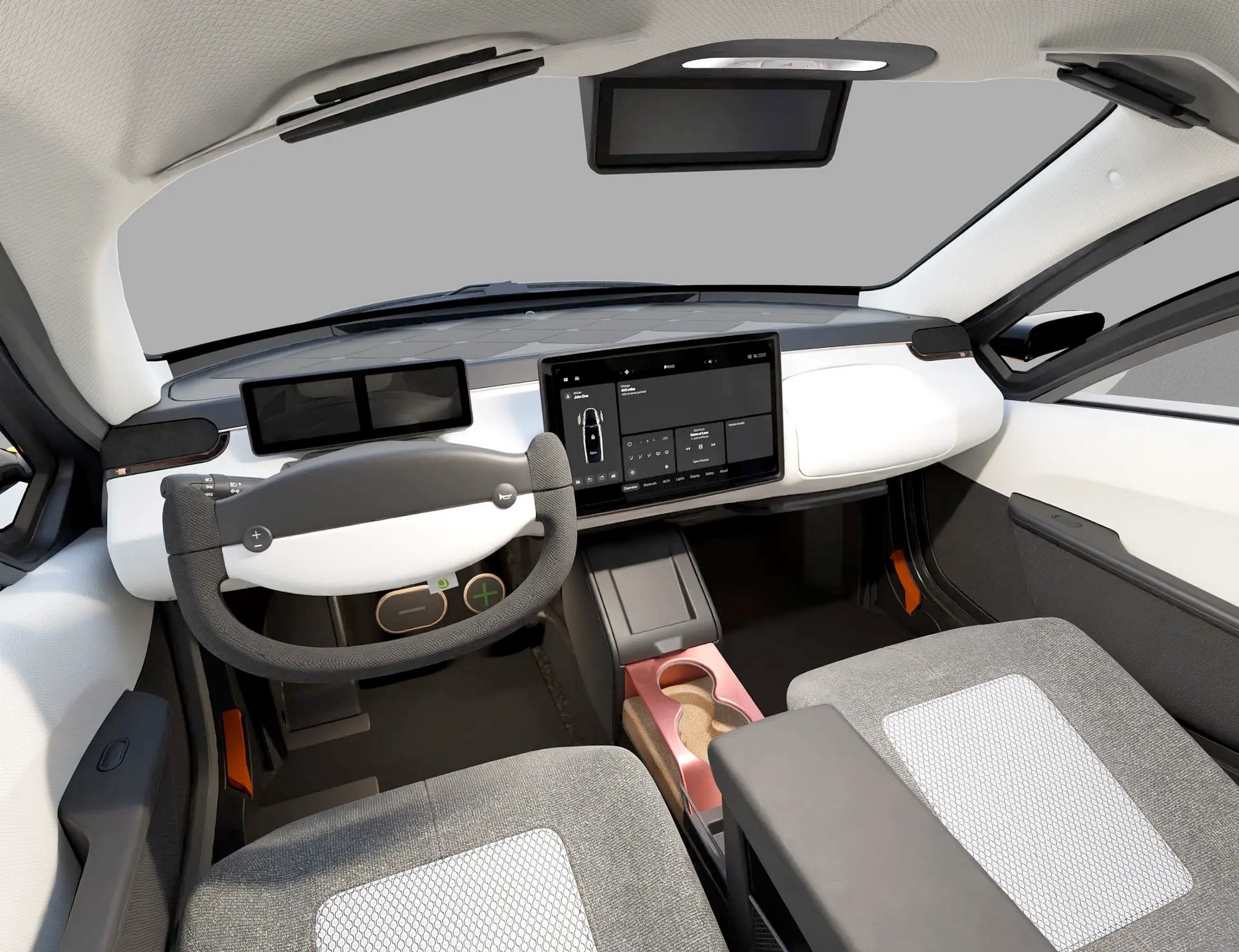
The PI2 name itself is a nod to the company’s testing journey, with “PI1” referring to a shell vehicle that was used to fit Aptera’s wiring harness and refine cable measurements. After completing low-speed functionality tests, the PI2 has moved into high-speed validation testing, which marks one of the last steps before full-scale production.
Aptera’s goal for mass production is ambitious: the company aims to produce 40 vehicles per day at its assembly plant in Carlsbad, California. If successful, Aptera will not only deliver an environmentally friendly vehicle but will also demonstrate a viable approach to renewable automotive design on a commercial scale.
Pricing and reservation information
For those interested in reserving an Aptera PI2, the Launch Edition is currently listed at a starting price of $30,700, although Aptera notes that this price may change. A fully loaded version of the Launch Edition tops out at $51,500, a price point that reflects the range of features and battery capacities available for the PI2.
Source: Aptera

